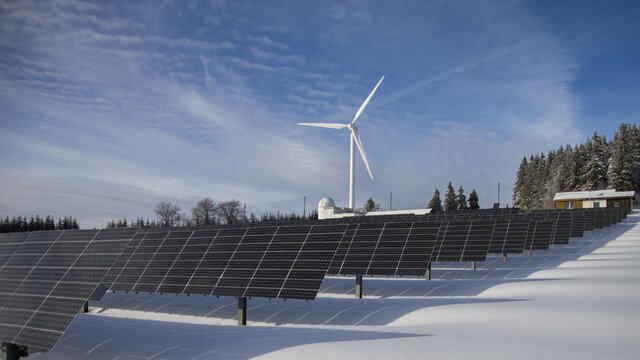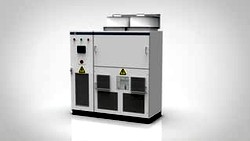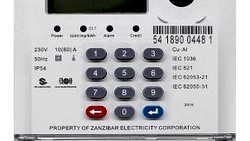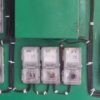As the world moves towards a cleaner energy future, there is an increasing focus on alternative sources of power. The traditional coal and gas-based energy production methods are gradually being replaced by renewable sources such as solar, wind and hydroelectricity. However, these new non-traditional forms of generating electricity have their own set of challenges that need to be addressed by power companies if they want to maintain their business models in this changing environment. In this blog post we'd like to discuss some of these main challenges facing power generation companies today.
Decreasing interest rates make it less profitable to run power companies
You may have noticed that interest rates are low. This is a problem, because if you're running a power company and your costs keep going up while your revenue stays steady, it's hard to make money.
This leads us to our second challenge: decreasing interest rates can make it more difficult for power companies to borrow money or raise capital from investors. To keep their plants running smoothly and efficiently, they must buy equipment with long lead times—which means that they need more cash on hand now than they did before the recession hit (or at least as much). But if investors think their investment will be worth less in the future due to inflationary trends or other factors outside their control (such as an increase in solar panel installation), then why would anyone invest now? The impacts can already be seen in various countries.
The gap between energy supply and demand is increasing due to various factors
- The population has grown significantly in the past few years, which means more electricity generated by power plants has to be supplied to meet their needs. This leads to an increase in prices for consumers as well.
- Electronic gadgets such as televisions, computers, refrigerators and air conditioners use less electricity than they did before because these devices have become more efficient compared with their predecessors. However, this also means that there are more people using these devices at any given moment, thus increasing demand for electricity from sources such as wind, solar, hydroelectric dams or thermal power plants. Therefore, there is more need for these types of plants since they need to cover all areas adequately, depending on the grid infrastructure.
Climate change has a big influence on weather patterns
Climate change is a global problem. It's caused or not by human activity, and it will affect all aspects of life. In fact, climate change is expected to have a big impact on power companies—and not just in terms of their ability to generate electricity for their customers.
The main challenge for power companies is that renewable energy sources such as wind turbines are unreliable when it comes to meeting peak demand at times when you need your lights turned on or your air conditioner running full blast in the summer.

Customers are more demanding nowadays
Customers are more demanding nowadays, expecting superior service and 100% uptime from power companies. This means that power companies have to be more reliable, have better quality control and environmental sustainability.
Newer generation needs smart meters for their high-end gadgets.
Smart meters are the future of the power industry. Smart meters are more accurate and more efficient, which means they can be used to provide better service to customers.
Smart meters can also help utilities save money by offering better pricing models for their customers' energy usage. This is because smart meters allow them to monitor those who use the most electricity at certain times of day or week, so that they can offer deals based on those patterns without having any extra equipment installed on your home or business building's electrical system (such as extra transformers).
Metering data is one of the most important aspects
Metering data is one of the most important aspects of any power company's business model because it determines their profit margins. It's also what allows them to create customer billing and distribution systems, as well as generate electricity from fossil fuels or renewables.
With rapidly increasing cost for electrical energy, we can see an increasing rate of utility loss due to fraud and tamper. Efficient metering data management can determine these losses for margin calculations. Smart meters with tamper disconnect function are helping to make the customers sensitive. Electrical energy is not for free.
Interoperability for smart meters and module integrations
The need for interoperability is becoming essential as more than one vendor can deliver products that need to work together. Most popular by now is the DLMS/COSEM protocol for meter communication and IDIS for hassle-free integration on large scale.
On distribution level, it's the SCADA protocol (Supervisory Control And Data Acquisition, IEC 60870).
The key aspects of power generation and distribution are evolving
The challenges of power generation and distribution are changing. They're complex, diverse, and ever-changing. We, as an energy services provider, keep pace with the latest technologies.
Conclusion
It is clear that the power industry is going through its biggest transformation ever, and it will remain so for the foreseeable future. But there are new technologies coming up that can help solve some of these challenges, or at least make life easier for our customers. For example, we have seen several smart metering vendors emerging in recent years, which means that interoperability between different vendors is a reality.
If you have questions about what we can do for you, just drop us a message or leave a comment in the section below.
Thank you for reading and stay safe!
Editor's note: This article was originally published in July 2022 and has been updated for comprehensiveness.





Thanks for sharing the information.
Thank you for reading and kind comment.